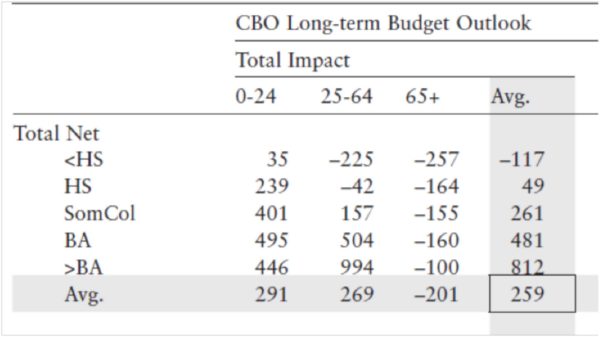The National Academies Did Not Say that Young, Low-Skill Immigrants Are a Fiscal Benefit
Jason Richwine, Center for Immigration Studies, May 13, 2020
In a debate last week with CIS Executive Director Mark Krikorian, George Mason University Prof. Bryan Caplan was asked about Milton Friedman’s famous dictum, “It’s just obvious you can’t have free immigration and a welfare state.” Caplan responded that although Friedman could be correct if the welfare state were sufficiently large, he is not correct in the context of today’s United States:
Now the question is, “How do the numbers actually turn out?” And I say when we go and look at those numbers [from the] National Academies of Sciences, you’ll see that Milton Friedman is just plain wrong. {snip}
The National Academies did not say that. Puzzled, I consulted the section of Caplan’s open-borders book where he discusses this issue. Here is the National Academies’ table that he references most often:

{snip}
Look at the row labeled “<HS”, which means a high school dropout. Among dropouts, immigrants in the 25-64 and 65+ age categories are clearly fiscal burdens, as they cost taxpayers $225,000 and $257,000, respectively. Caplan, however, is tantalized by the age 0-24 column, which shows positive $35,000. “Even young high school dropouts more than pull their weight,” he concludes.
That conclusion is based on a misunderstanding of the table. Among immigrants in the age 25-64 and 65-plus columns, the education rows refer to the education of the immigrants themselves. However, in the age 0-24 column, education refers to the education of the immigrants’ parents. {snip} The reason the fiscal impact appears positive is that the model assumes that the children of high school dropouts will get more education than their parents did. {snip}
{snip}















